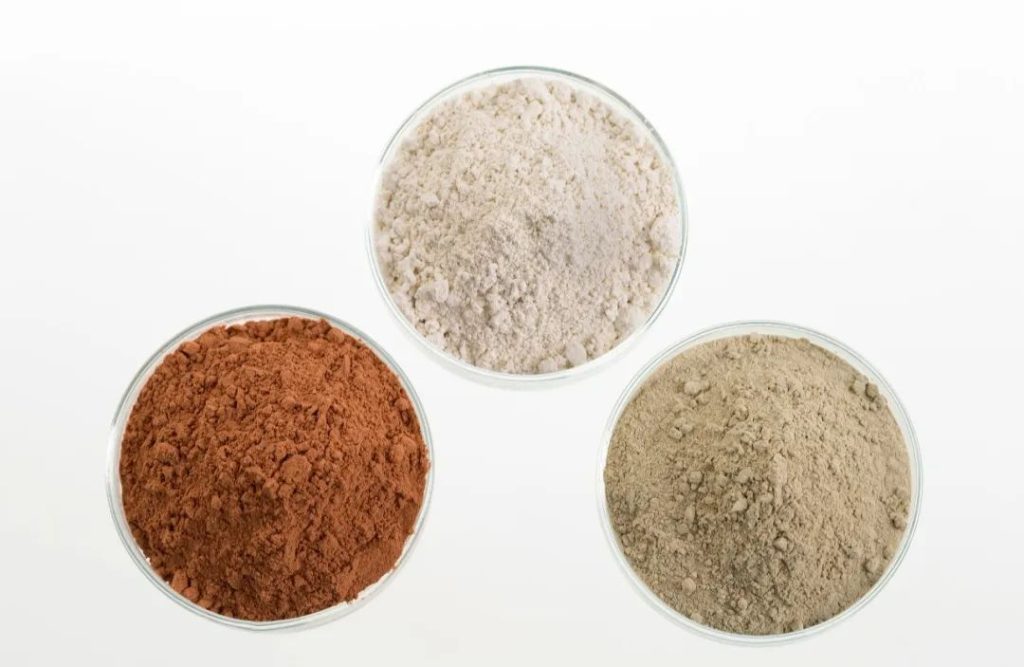8 Concepts About Bentonite Clay

1. Bentonite
Bentonite, also known as “bentonite” or “bentonite”, is a non-metallic mineral with montmorillonite as the main mineral component. It often contains a small amount of illite, kaolinite, zeolite, feldspar and calcite and other minerals. Montmorillonite The stone content determines the utilization value of natural bentonite.
2. Montmorillonite
Smectite is a large family of minerals with complex chemical composition. The International Clay Association has determined that Smectite is the family name, that is, the smectite family, also known as the smectite family. This group of minerals includes two subgroups, dioctahedral and trioctahedral, and more than a dozen mineral species. Bentonite usually contains minerals from the dioctahedral subgroup, such as montmorillonite, beidellite, nontronite, etc.
3. Sodium bentonite and calcium bentonite
Because part of the silicon ions and aluminum ions in the silicon-oxygen tetrahedron and aluminum-oxygen octahedron are often replaced by other low-priced cations, the montmorillonite crystal structure has a permanent negative charge. In order to balance the electricity price, the montmorillonite unit cell will adsorb exchangeable cations.
According to the type, content and crystallization chemical properties of exchangeable cations contained in bentonite, bentonite is divided into calcium bentonite, sodium bentonite, magnesium bentonite and calcium-sodium bentonite. The most common ones are the first two. .
4. Organic bentonite
Organobentonite refers to using organic ammonium cations to replace exchangeable cations in montmorillonite, covering the surface of montmorillonite, blocking the water adsorption center, causing it to lose its water absorption function, and turning into hydrophobic and lipophilic organobentonite. complex.
Organobentonite can be divided into high-viscosity organobentonite, easily dispersible organobentonite, self-activating organobentonite, and high-purity organobentonite according to functions and components.
5. Lithium bentonite
There are very few natural lithium bentonite resources. Therefore, artificial lithiation is one of the main methods for preparing lithium bentonite.
Lithium bentonite can form gel in organic solvents and replace organic bentonite. Lithium bentonite has excellent swelling, thickening and suspending properties in water, lower alcohols and lower ketones, so it is widely used in architectural coatings, latex paints, casting coatings and other products to replace various organic cellulose suspending agents.
6. Activated clay
Activated clay is made from clay (mainly bentonite) as raw material, which is obtained by inorganic acidification or salt treatment. It is a porous white-off-white powder with a microporous structure and a large specific surface area, and has strong adsorption properties. It is mainly used for decolorization and refining of petroleum processing products (lubricating oil, paraffin, petroleum jelly) and industrial animal and vegetable oils, and is used as adsorbent and catalyst carrier in the chemical industry.
7. Pillared montmorillonite
Pillared montmorillonite is a mineral material with two-dimensional pores formed by polymerized inorganic cations or organic ions (molecules) inserted into montmorillonite. It has a large specific surface area, good thermal stability, strong surface acidity and adjustable pore size. It has broad application prospects in petrochemical industry, sewage treatment, antibacterial materials and other fields.
8. Bentonite gel
Bentonite inorganic gel is a high value-added colloidal product produced with bentonite as the main raw material through purification, sodium modification, phosphating modification and gelation. The preparation process mainly includes the purification of bentonite raw ore, There are four major processes: sodium modification, phosphating modification and gelling.
Inorganic gel is a high value-added bentonite deep processing product that can be used as a thixotropic agent, thickener, dispersant, suspending agent, stabilizer, etc. It is widely used in daily chemicals, pharmaceuticals, detergents, ceramics, glass, papermaking, and casting. , battery and other industries.
